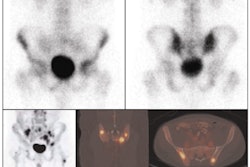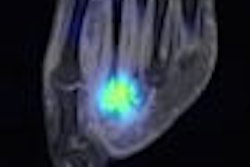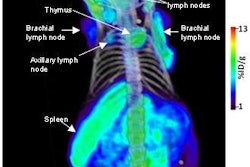There are no quick fixes to the manufacture of medical radioisotopes in the U.S. to ensure an adequate supply of molybdenum-99 (Mo-99) in the future.
A preliminary draft report from an SNM task group has found that U.S. production and supply of Mo-99 is several years away and would require significant investment and regulatory approvals. The group reviewed six potential sources of Mo-99 in and for the U.S.
SNM commissioned the report to find alternatives to Atomic Energy of Canada's (AECL) Chalk River Laboratories facility, where AECL's National Research Universal (NRU) nuclear reactor supplies most of the Mo-99 used in North America. A shutdown of the Chalk River reactor in November 2007 interrupted supplies in the U.S. for several weeks.
The situation was complicated when AECL announced in May that it was halting plans to build new Maple reactors to replace the NRU facility, which went into operation in 1957.
University of Missouri Research Reactor Center (MURR)
The University of Missouri Research Reactor Center is the most promising option, the group said. The facility potentially could meet half of the U.S. market's current need for Mo-99 with little change to its current reactor and could serve as a short-term alternative supplier when other reactors are down.
MURR currently is working on the design of a processing center near its existing reactor building. While the University of Missouri would own the processing center, the funding mechanism has not yet been determined. MURR is pondering public-private partnership, federal support, and/or donations to get the processing center up and running.
Plans are to have the center's design completed by the end of this year, if not sooner. MURR also is waiting for a license amendment from the Nuclear Regulatory Commission (NRC) for a sample target irradiation. MURR is expecting the amendment by the end of July. When that hurdle is passed, MURR can select a target design.
If all goes well, production of Mo-99 at MURR could begin by 2012.
Australian Nuclear Science and Technology Organization (ANSTO) and ANSTO Radiopharmaceuticals and Industrials (ARI)
The ANSTO reactor is in place and by October 2008 is scheduled to produce 10% of Australia's market for Mo-99. If ANSTO decides to produce Mo-99 for the U.S. market as well, its production can expand from its current one manufacturing run per week to multiple shifts.
The SNM draft report notes that if ANSTO were to build a larger reactor, financial returns would be a concern, with the declining value of the U.S. dollar as one issue, making an investment of that magnitude less desirable.
In addition, U.S. manufacturers would have to file supplements to their U.S. Food and Drug Administration (FDA) new drug applications to use the Mo-99 from Australia. It could be four to six months before the FDA would review the application. ANSTO also would have to submit a drug master file to the FDA.
Babcock & Wilcox Technical Services Group (B&W)
Using aqueous homogeneous reactors (AHR) with lower enriched uranium fuel, B&W could supply 50% of the U.S. market. The SNM task group wrote that production "could be staggered and linked with radiopharmacies so that they receive the product in a timely fashion."
B&W's AHRs could be used as backups for one another in Mo-99 production. The first facility would be built in either the St. Louis or Boston areas for close proximity to Mo-99 manufacturing sites.
B&W already is investing in the technology and plans to collaborate with a pharmaceutical partner and private investments for the development and cost of the project. The SNM draft estimates the cost at less than $100 million, including research and development. The investment would likely be from private sources and not from government funding.
The SNM task group noted that a five-year timeline on the project began this past February. Currently, B&W is in the early phases of the license process with the NRC. The draft also noted that current nuclear reactor regulations do not specifically address AHRs, "so licensing under current regulation may require clarifications. New regulations may become necessary to appropriately address this relatively low hazard type of reactor."
Annular Core Research Reactor (ACRR) at Sandia National Laboratories
TheAnnular Core Research Reactor has the capability to meet 100% of the need for the U.S. market, according to the SNM draft report. The problem is that the reactor currently is being used for defense programs by the U.S. Department of Energy (DOE).
In short, for the ACRR to produce Mo-99, the SNM task group noted that the DOE would have to change the mission for the reactor, the facilities and reactor would have to be modified to allow for the production of Mo-99, and the funding for those changes would have to be developed by industry or a possible consortium with industry and the DOE.
The investment to convert the ACRR into a steady-state reactor is estimated at between $10 million and $50 million.
A new reactor could be sited at Sandia or at another national lab, thus shortening the time for licensing approval, but the cost likely would be greater.
National Nuclear Safety Administration (NNSA)
The SNM draft discounted any immediate help from the National Nuclear Safety Administration, which is responsible for minimizing the use of highly enriched uranium in the civilian sector and ensuring that there is technology to produce an indigenous supply of Mo-99. The NNSA is not charged with developing the supply of the isotope.
The draft noted that it "would not be possible at this time to use an existing DOE reactor for the production of Mo-99. The DOE would have to go through a long process to determine where the best location would be and whether it would be the best use of federal funds."
Atomic Energy of Canada (AECL)/MDS Nordion
AECL and MDS Nordion of Kanata, Ontario, currently provide approximately 40% of the world's supply of Mo-99. The NRU reactor can supply approximately 80% of the world's needs on a sustained basis.
Although the Maple project was recently canceled, AECL plans to extend the license of the NRU reactor, which currently expires in 2011.
By Wayne Forrest
AuntMinnie.com staff writer
July 22, 2008
Related Reading
MDS sues AECL for $1.6 billion over Maple reactors, July 9, 2008
SNM cites regulatory, reimbursement, and research as top priorities, June 18, 2008
Nuclear medicine must overcome obstacles to flourish in the future, June 15, 2008
MDS to press AECL on Chalk River reactors, June 6, 2008
SNM explores feasibility of U.S. medical isotope source, May 22, 2008
Copyright © 2008 AuntMinnie.com



















